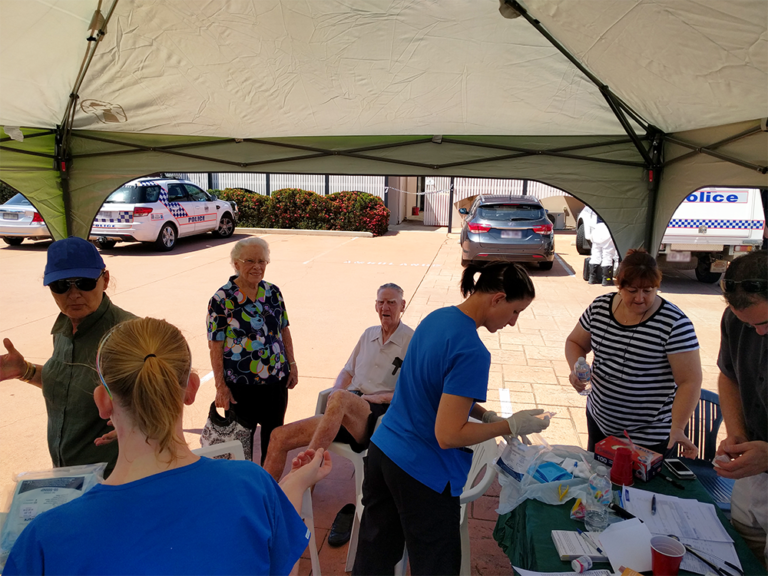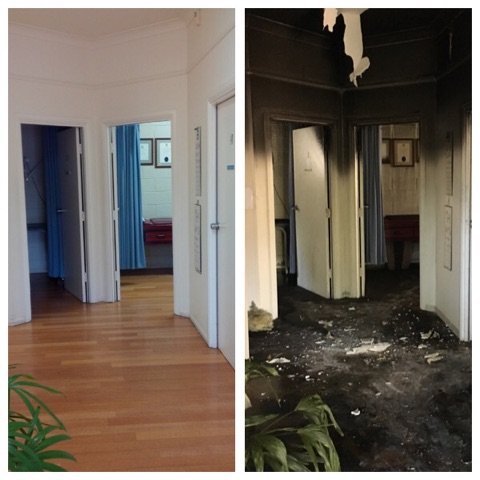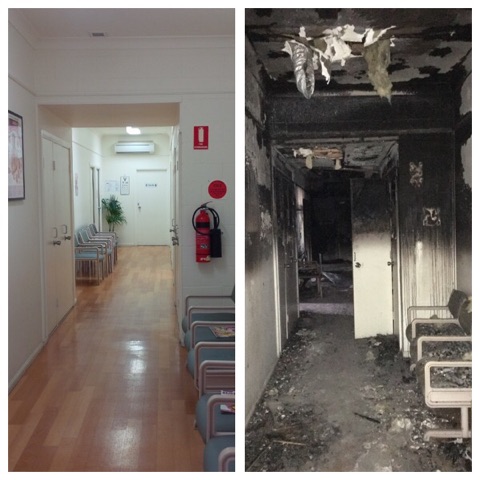Practices in Focus
Hyde Park Medical Centre

The famous Dorothea Mackellar poem emotes what many Australians feel. ‘I love a sunburnt country, a land of sweeping plains, of ragged mountain ranges, of droughts and flooding rains… her beauty and her terror – the wide brown land for me’. The lines of this poem ring true, from east coast to west and all that lies between, nowhere is exempt from risk of adverse or unexpected events.
Within the suburb of Hyde Park, 15 minutes from the famous Townsville Strand waterfront, on Bayswater Road, is Hyde Park Medical Centre (HPMC); a large general practice with seven doctors serving the suburban area of Townsville by caring for an average of 150 patients per day.
First accredited by AGPAL in 1999, with another six accreditations under their belt since, HPMC has a long standing commitment to quality and innovation. Accreditation preparedness conducted during these accreditation cycles became more valuable than the practice staff could ever have imagined.
In the early hours of Wednesday 12 October 2016, HPMC went up in flames. Disposal bins outside of the premises had caught alight and was being treated as suspicious. At 3am, practice staff stood outside the premises, staring in disbelief. The damage was extensive. In a true testament to the focus of the clinic and its commitment to their patients was a strong statement made within hours of the fire.
Dr Andrew Cartwright, Practice Principal, quoted by a local paper as saying “We are thinking about the patients at this time, we don’t want them to be disadvantaged, that’s our main focus at the moment. We hope to be running a limited service (today) and we hope to have a phone up and running, so patients can phone and speak to a receptionist.”
That very same day staff operated out of a makeshift medical centre in the carpark, treating patients who were shocked to arrive to find their local practice had been gutted by flames. The carpark was a hub of activity, with doctors calling patients to cancel appointments while emergency services continued to work around them. Within five days, HPMVC had secured a new temporary site, while waiting for the investigation and rebuild of their former facility, at premises just across the road.

Interview
How did Hyde Park Medical Centre’s contingency plan stack up when needing to be implemented? We spoke with Kylie Voevodin, Practice Manager to find out more.
AGPAL Team: Can you provide some details regarding your business contingency plan?
Kylie: Our business continuity plan was activated from the time I received a call in the early hours of the morning to alert me of the fire that had engulfed HPMC. We have a Non-Medical Emergency Manual (NMEM) in place and access to an Emergency Response Planning Tool (ERPT).
My first priority as per my plan was to call doctors and staff to alert them and gather the team to formulate a plan to attend to the immediate needs of patients with appointments that day. I needed to find premises in the locality of the HPMC so I could relocate my medical practice. Another priority was contacting my IT support team to obtain the most recent back up external drives to test the integrity of my system.
Q: How did you activate your business continuity plan to be able to continue seeing patients without the use of your computer systems?
Kylie: The first step was to have the main telephone diverted so that we could receive calls from our patients. As our site had a large carpark, we quickly arranged three tents to work out of, one for reception, one for the doctors and one for the nurses, spaced accordingly to allow for privacy. Patients were triaged upon arrival by nurses, and for patients who needed results or reviews, it was arranged with the lab and radiology to courier the results to us. Consultation notes and scripts were handwritten and paper charts were activated.
The most difficult aspect has been telecommunications to set up new premises. All of our systems are reliant on telecommunications and without the support of emergency support from your IT provider and network, the recovery process is arduous. The best plans can be disrupted without phone, fax and internet.
Another challenging aspect was because the doctors and allied health providers relocated, each provider had to be reissued with a new provider number. Trying to get that organised without internet or fax was nothing short of a nightmare!
AGPAL Team: What role did your staff play in implementing the plan?
Kylie: On the day of the fire I gathered individual staff into groups and assigned tasks to each group to assist us in getting back up and running.
The reception staff were required to take phone calls and advise patients of our situation, while doing their best to determine the urgency of patient needs and triage accordingly.
Practice nurses were delegated the task of providing me with a list of equipment urgently required to ensure we could get ourselves back up and running once we secured a new site. An inventory list was created, based on what was listed in our Practice Policy Manual. Doctors made themselves available to see patients who attended the site, as some were unaware of the event. We were not without a doctor at any time and this enabled patients to be seen if required.

AGPAL Team: Having put your plan into action, what tips would you offer other practices to assist them in ensuring they are ready for an unplanned scenario?
Kylie: Imagine losing everything, consider what you would do? Have a backup plan! Meet with your staff and discuss the ‘what if’s’. Have a step-by-step process outlining what you need to do if you cannot gain access to your practice and discuss it with your staff, including doctors and nursing staff. I now carry a box with me that contains all of my back up drives and emergency documents on a USB that does not remain at the practice overnight. This means if we were to encounter a similar situation in the future, I would have all of my documents and information available to use instantly.
AGPAL Team: What is the most noteworthy lesson you and your team have taken from this experience?
Kylie: Don’t be complacent and think that it won’t happen to you. Review what to do in case of an emergency. This includes natural disasters, fire, power outage, bomb threats or any other threat to your practice.
We were incredibly lucky to secure a new site diagonally across the road from where we were previously located, which has allowed us to retain our close patients. Even though the medical facility had significant damage, we were still able to access part of the practice after being given the all clear from the authorities.
This enabled us to access important documents and trays to keep the practice working. The biggest lesson was to have this available regardless, to have manual Medicare slips and EFTPOS machine available, and have documents backed up on a USB for access, including what doctors may require to see patients during an emergency.
AGPAL would like to thank Kylie and the Hyde Park Medical Centre for sharing their story with us.



